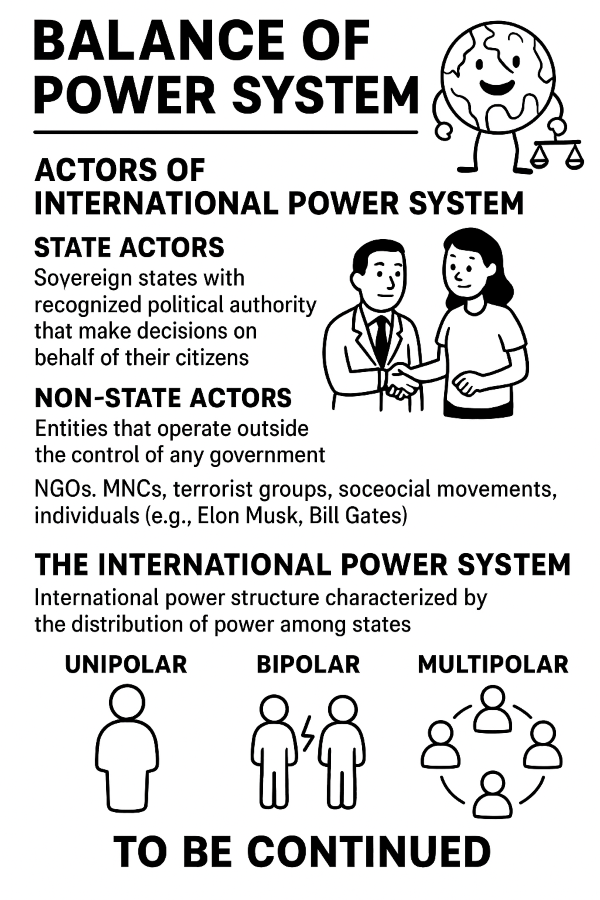Ethical wealth distribution: Theravada and Mahayana Buddhism-by C.A Saliya
Source:Island
The rules of income distribution as outlined in the Sigalovada Sutta, often referred to as the “householder’s discipline” or the “layperson’s code of conduct,” offer valuable guidance on ethical financial management and distribution of income in Buddhist thought. This sutta is part of the Digha Nikaya of the Pali Canon and addresses how a layperson should conduct their life in relation to family, friends, and community, including the responsible use of wealth.
The Sigalovada Sutta prescribes that wealth should be divided into four portions, each serving a different purpose. This fourfold division serves as a model for ethical financial management that promotes personal security, family care, social responsibility, and spiritual well-being.
* One portion for daily needs: This refers to spending on one’s livelihood, ensuring basic needs are met without excess. It includes food, shelter, clothing, and other essential expenses.
* Two portions for investment: These two portions should be used for increasing wealth, either through business, savings, or investments. The aim is to ensure long-term financial stability, reflecting the Buddhist value of planning for the future with mindfulness and foresight.
* One portion for charity: The final portion should be allocated for charitable giving, supporting religious institutions (such as monks and temples), helping those in need, and contributing to social welfare. This aligns with the Buddhist emphasis on dana (generosity) and the moral responsibility to support others.
Validity and Relevance in Modern
Economic Context
The rules of income distribution in the Sigalovada Sutta remain valid for people who can manage a quarter of their income for daily needs. However, when 10% of people enjoy the lion share of 90% of the wealth while only 10% of the wealth is distributed among 90% of people in developing countries, the practicality of these rules is almost impossible.
Balance Between Consumption and Savings
The Sutta advocates for a balanced approach to spending, saving, and investing, which may aligns with modern financial principles in most advanced economies, where a significant portion of income is often invested in assets like home loans. This approach is consistent with the Sutta’s rule of reinvesting to accumulate wealth. The encouragement to save and invest reflects sound financial planning, helping individuals build long-term financial security and avoid excessive debt, a challenge prevalent in many low and lower and middle-income economies.
Investment for the Future
The recommendation to allocate two portions for investment highlights the importance of growing wealth in a sustainable and ethical way. In a capitalist society, this could translate into saving for retirement, investing in business ventures, or acquiring assets that can generate long-term benefits. Such a strategy encourages people to think beyond immediate consumption and fosters financial stability across generations.
However, the Sutta does not elaborate on the types of investments. While modern investments can generate wealth, some may conflict with Buddhist ethics (e.g., investments in harmful industries). The application of “right livelihood” (samma ajiva) would need to guide modern investment decisions, ensuring that they align with non-harmful, ethical industries.
Charity and Social Responsibility
The portion allocated to charity in the Sigalovada Sutta underscores the importance of generosity, social welfare, and communal support. In Buddhist ethics, dana is a key virtue that promotes not only the well-being of the recipient but also the spiritual growth of the giver. This approach to wealth distribution is particularly relevant today, where growing income inequality has raised concerns about social justice and equity.
Modern systems of philanthropy and corporate social responsibility (CSR) echo this principle of giving back to society. However, the Sutta frames charity not as an optional, occasional act, but as an integral and regular part of one’s financial life. This can serve as a moral critique of modern practices where charity is often viewed as secondary to personal wealth accumulation.
Moderation and Non-Attachment
The Sutta encourages wealth management without attachment, reminding individuals not to become slaves to material wealth. This aspect of the Sutta remains deeply relevant in today’s consumerist society, where the pursuit of wealth often becomes an end in itself, leading to stress, dissatisfaction, and ethical compromises.
In a world where economic success is often measured by material accumulation, the Buddhist approach to moderate consumption and wealth-sharing offers a counter-narrative. The focus on ethical and mindful use of wealth promotes well-being, both at an individual level and within the broader community.
Challenges and Limitations
While the principles of the Sigalovada Sutta provide a strong ethical foundation, there are some challenges in their direct application in a modern, globalized economy:
* Changing Economic Systems: The economy during the Buddha’s time was much simpler, based on agrarian and barter systems. Today’s complex financial systems, with varied forms of income (salary, investments, passive income), may require a reinterpretation of the Sutta’s guidelines to fit different types of financial arrangements.
* Wealth Disparity: The Sutta assumes a relatively equitable distribution of resources and wealth within society. In modern economies, however, there are vast differences in income levels, and what constitutes “enough” for daily needs, savings, and charity can vary significantly across socio-economic classes.
* Capitalism and Profit Maximization: The Sutta’s approach contrasts with modern capitalism’s focus on profit maximization and economic growth at all costs. While the Sutta promotes ethical financial management and redistribution, capitalism often prioritizes individual wealth accumulation. This divergence presents a challenge for applying the Sutta’s principles in highly capitalistic societies where personal gain is incentivized.
Comparison of application of Singalovada
Stta between Theravada and Mahayana
The Sigalovada Sutta holds a significant place in both Theravada and Mahayana Buddhism as a guide for laypeople, particularly in the realm of ethical living and financial management. However, the application and interpretation of its principles, especially in relation to wealth distribution and social ethics, differ between the two traditions. These differences stem from the distinct philosophical and doctrinal foundations of Theravada and Mahayana Buddhism.
Theravada Buddhism’s Application of the Sigalovada Sutta
Theravada Buddhism emphasizes individual ethical conduct and personal enlightenment, applying the Sigalovada Sutta to personal and familial responsibilities. The focus is on personal responsibility and right livelihood (samma ajiva), where individuals are encouraged to earn a living without causing harm. Wealth is seen as a tool for fulfilling basic needs, supporting family, and practicing generosity (dana), particularly towards the Sangha and local community.
Theravada promotes moderation and non-attachment to wealth, in line with the Middle Path, avoiding excessive accumulation. The Sutta’s teachings guide individuals to manage wealth wisely while focusing on personal and community well-being, reinforcing mutual dependence between laypeople and monks for material and spiritual support.
Mahayana Buddhism’s Application of the Sigalovada Sutta
Mahayana Buddhism, through its Bodhisattva ideal, offers a broader interpretation of the Sigalovada Sutta, focusing on the societal implications of wealth distribution and ethical conduct. Wealth in Mahayana is viewed not just for personal well-being but as a tool for societal transformation, used to reduce suffering and promote collective welfare.
In this framework, charity takes on a universal dimension, with Mahayana practitioners encouraged to direct their resources toward large-scale social initiatives like education, healthcare, and poverty alleviation. The emphasis is on benefiting all beings, reflecting the Mahayana ethos of compassion and social responsibility.
Compared to Theravada’s stricter approach to wealth, Mahayana allows greater wealth accumulation, as long as it serves altruistic goals. This aligns with the Mahayana principle of upaya (skillful means), where the ethical use of wealth becomes a method to alleviate suffering and guide others toward enlightenment.
Comparison
The key differences in interpretation between Theravada and Mahayana Buddhism regarding charity, wealth, and ethical conduct can be summarized as follows:
Scope of Charity:
Theravada: Charity is more localized, focusing on immediate responsibilities like family, friends, and the Sangha (monastic community).
Mahayana: Charity is global in scope, aimed at benefiting all beings, reflecting the Mahayana vision of interconnectedness and collective enlightenment.
Ethical Conduct and Wealth:
Theravada: Emphasizes individual ethical conduct and personal spiritual growth, where wealth is a personal responsibility, contributing to individual merit and well-being.
Mahayana: Focuses on collective well-being, with the Bodhisattva ideal promoting the use of wealth for broader social and spiritual welfare.
Wealth Accumulation:
Theravada: Advocates for moderation in wealth accumulation, consistent with the Middle Path, viewing wealth with caution to avoid attachment that may hinder spiritual progress.
Mahayana: Permits greater wealth accumulation if directed toward altruistic goals, using wealth as a tool for social transformation in alignment with the Bodhisattva’s mission.
Common Ground:
Ethical Conduct: Both traditions stress earning wealth ethically through right livelihood, avoiding harm.
Generosity: Charity (dana) is central to both, emphasizing generosity as a way to reduce attachment and contribute to well-being.
Non-Attachment: Both stress non-attachment to wealth, though the degree and application of this differ between the two traditions. Wealth is seen as a means to support ethical living rather than an end goal.
(The writer, a senior Chartered Accountant and professional banker, is Professor at SLIIT University, Malabe. He is also the author of the “Doing Social Research and Publishing Results”, a Springer publication (Singapore), and “Samaja Gaveshakaya (in Sinhala). The views and opinions expressed in this article are solely those of the author and do not necessarily reflect the official policy or position of the institution he works for. He can be contacted at saliya.a@slit.lk and www.researcher.com)


























